Israel’s leading paper says its own army deliberately killed Israelis on October 7
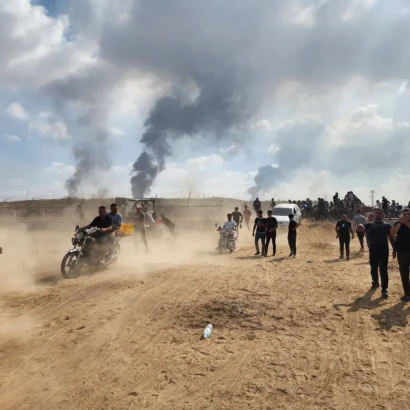
Two articles below:
Israel’s leading paper says its own army deliberately killed Israelis on October 7. But in the U.S. media: silence…
Israel ordered the “Hannibal Directive” on October 7 by ordering the killing of captive Israeli soldiers and civilians. But the U.S. media continues to hide the truth.
by James North, reposted from Mondoweiss,July 10, 2024

Three days ago, Israel’s leading newspaper, Haaretz, published the results of its thorough, comprehensive investigation into what actually happened when Hamas attacked on October 7. So far, the U.S. mainstream media has not said a word about the shocking results of that investigation. Critics sometimes use the expression “media malpractice” to describe the American mainstream’s failure to report accurately about Israel/Palestine. This time, though, what’s happening is even worse; it has to be deliberate self-censorship, designed to hide the truth from the U.S. audience.
Haaretz’s long report found that Israel’s army had employed the “Hannibal Directive” on October 7. The Directive is an Israeli policy that instructs the military to open fire on its own soldiers to prevent them from being taken captive. Of course, this site, alongside other alternative media sources, was one of the first to point out the possible role of the Hannibal Directive in Israeli deaths on October 7. But the Haaretz report was significant in the number of military sources it interviewed who confirmed that there were direct orders to implement the Directive.
Haaretz explained that the policy has “the intent of foiling kidnapping even at the expense of the lives of the kidnapped.” At first, the army started deploying “Ziks,” unmanned assault drones. Later, the army fired mortars, and then artillery shells. Haaretz also confirmed that the military did know that Israeli civilians had also been taken hostage, but, nonetheless, at 11:22 a.m. the order came down: “Not a single vehicle can return to Gaza.”
The Haaretz report is cautious, but it still concludes: “[The 11:22 a.m. message] was understood by everyone. . . At this point, the IDF was not aware of the extent of kidnapping along the Gaza border, but it did know that many people were involved. Thus, it was entirely clear what the message meant, and what the fate of some of the kidnapped people would be.”
In other words, some — possibly many — of the Israeli deaths that day, including civilians, were deliberately caused by Israel’s own military. How this is not news is incomprehensible. But, three days later, in the New York Times: not a word. The Washington Post: nothing. CNN: nothing. National Public Radio: nada.
Instead, if you plug “Hannibal” into the search engines at these media sites, the results only mention “Hannibal Lecter,” the fictional serial killer who was the subject of a book and popular film.
But there’s nothing new about the Israeli military’s Hannibal Directive. (The doctrine is probably named for the Carthaginian general who fought Rome in 200 B.C., who said he would swallow poison instead of surrendering. Some Israeli sources claimed that the name was randomly generated, an assertion that prompts skepticism.)
Way back on October 22, this site reported:
“A growing number of reports indicate Israeli forces responsible for Israeli civilian and military deaths following October 7 attack.”
Then, last March, the estimable Jonathan Ofir also posted here that an actual Israeli soldier, Captain Bar Zonshein, had admitted to “firing tank shells on vehicles carrying Israeli civilians.”
The even more comprehensive Haaretzinvestigation should have prompted a reaction from the mainstream U.S. reporters who are stationed in Israel. American journalists should have been cultivating their own sources since October 7, and been ready to at least match the Haaretz article. Instead, the only response so far has been a panel hosted by Piers Morgan,and a Mehdi Hasan/Bassem Youssef podcast.
I’ve followed the U.S. media coverage of Israel/Palestine closely for more than a decade now. Continuing to hide Israel’s deployment of the Hannibal Directive on October 7 is one of the most offensive examples of self-censorship that I can recall. The mainstream’s dishonesty is just one more example of why alternative websites are indispensable.
James North is a Mondoweiss Editor-at-Large, and has reported from Africa, Latin America, and Asia for four decades. He lives in New York City. Follow him on Twitter at @jamesnorth7
Following is the Ha’aretz article:
IDF Ordered Hannibal Directive on October 7 to Prevent Hamas Taking Soldiers Captive
by Yaniv Kubovich, reposted from Haaretz,Jul 7, 2024
‘There was crazy hysteria, and decisions started being made without verified information’ — Documents and testimonies obtained by Haaretz reveal the Hannibal operational order, which directs the use of force to prevent soldiers being taken into captivity, was employed at three army facilities infiltrated by Hamas, potentially endangering civilians as well…
Gaza Division operations and airstrikes in the first hours of October 7 were based on limited information. The first long moments after the Hamas attack was launched were chaotic. Reports were coming in, with their significance not always clear. When their meaning was understood, it was realized that something horrific had taken place.
Communication networks could not keep up with the flow of information, as was the case for soldiers sending these reports. However, the message conveyed at 11:22 a.m. across the Gaza Division network was understood by everyone. “Not a single vehicle can return to Gaza” was the order.
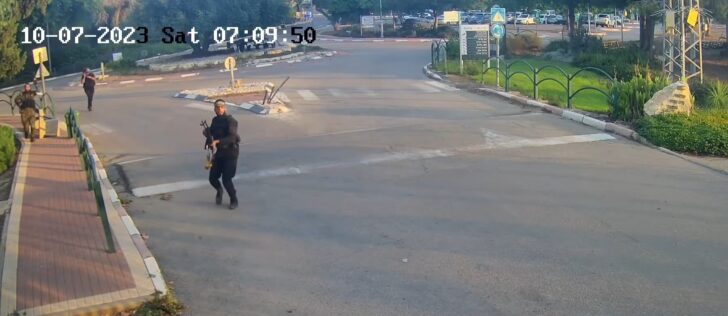
At this point, the IDF was not aware of the extent of kidnapping along the Gaza border, but it did know that many people were involved. Thus, it was entirely clear what that message meant, and what the fate of some of the kidnapped people would be.
This was not the first order given by the division with the intent of foiling kidnapping even at the expense of the lives of the kidnapped, a procedure known in the army as the “Hannibal procedure.”
Documents obtained by Haaretz, as well as testimonies of soldiers, mid-level and senior IDF officers, reveal a host of orders and procedures laid down by the Gaza Division, Southern Command and the IDF General Staff up to the afternoon hours of that day, showing how widespread this procedure was, from the first hours following the attack and at various points along the border.
Haaretz does not know whether or how many civilians and soldiers were hit due to these procedures, but the cumulative data indicates that many of the kidnapped people were at risk, exposed to Israeli gunfire, even if they were not the target.
At 6:43 a.m., at which time rocket barrages were launched at Israel and thousands of Hamas operatives were attacking army strongholds and the division’s observation and communications capabilities, the division’s commander Brig. Gen. Avi Rosenfeld declared that “the Philistines have invaded.”
This is the procedure when an enemy invades Israeli territory, upon which a division commander can assume extraordinary authority, including the employment of heavy fire inside Israeli territory, in order to block an enemy raid.
A very senior IDF source confirmed to Haaretzthat the Hannibal procedure was employed on October 7, adding that this was not used by the divisional commander. Who did give the order? This, said the source, will perhaps be established by post-war investigations.
In any case, says a defense official who is familiar with the October 7 operations at the Gaza Division, in the morning hours “no one knew what was going on outside.” He says that Rosenfeld was in the war room, not emerging, “while outside a world war was raging.”
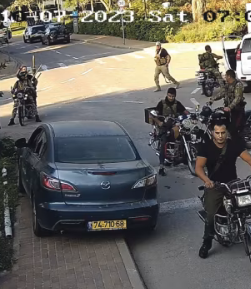
“Everyone was shocked by the number of terrorists who had penetrated the base. Even in our nightmares, we didn’t have plans for such an attack. No one had a clue about the number of people kidnapped or where army forces were. There was crazy hysteria, with decisions made without any verified information,” he continued.
One of these decisions was made at 7:18 a.m., when an observation post at the Yiftah outpost reported that someone had been kidnapped at the Erez border crossing, adjacent to the IDF’s liaison office. “Hannibal at Erez” came the command from divisional headquarters, “dispatch a Zik.” The Zik is an unmanned assault drone, and the meaning of this command was clear.
This wasn’t the last time that such an order was heard over the communications network. Over the next half hour, the division realized that Hamas terrorists had managed to kill and abduct soldiers serving at the crossing and at the adjacent base. Then, at 7:41 a.m., it happened again: Hannibal at Erez, an assault on the crossing and the base, just so that no more soldiers be taken. Such commands were given later as well.
The Erez border crossing was not the only place this happened. Information obtained by Haaretz and confirmed by the army shows that throughout that morning, the Hannibal procedure was employed at two other locations penetrated by terrorists: the Re’im army base, where the divisional headquarters were located, and the Nahal Oz outpost in which female spotters were based. This did not prevent the kidnapping of seven of them or the killing of 15 other spotters, as well as 38 other soldiers.
Over the next few hours, division headquarters started putting the pieces of the puzzle together, realizing the extent of the Hamas attack, but missing the invasion of Kibbutz Nir Oz, which the first army forces reached only after the terrorists had left. Regarding the frequency of employing the Hannibal procedure, it seems that nothing changed. Thus, for example, at 10:19 a.m. a report reached divisional headquarters indicating that a Zik had attacked the Re’im base.
Three minutes later, another such report arrived. At that time, Shaldag commando forces were already on the base fighting the terrorists. To this day, it’s not clear whether one of them was hurt in the drone attack. What is known is that over the communications network there was a message asking everyone to make sure no soldier was outdoors on the base, since IDF forces were about to enter and drive out or kill remaining terrorists.

The decision to conduct attacks inside outposts, says a senior defense official, will haunt senior commanders all their lives. “Anyone making such a decision knew that our combatants in the area could be hit as well.”
But such attacks took place, it turns out, not only inside outposts or bases. At 10:32 a.m., a new order was issued, according to which all battalions in the area were ordered to fire mortars in the direction of the Gaza Strip. Internal discussions in the army noted that this order, attributed to Brig. Gen. Rosenfeld, was heavily criticized, since at that time, the IDF did not have a complete picture of all the forces in the area, including soldiers and civilians. Some of these were in open areas or in woods along the border, trying to hide from the terrorists.
At that point, the army did not know the number of people who had been kidnapped. “We thought they numbered dozens at that stage,” a military source told Haaretz. Firing mortars at the Gaza Strip would endanger them as well. Furthermore, another order given at 11:22 a.m., according to which no vehicle would be allowed to return to Gaza, took this a step further.
“Everyone knew by then that such vehicles could be carrying kidnapped civilians or soldiers,” a source in Southern Command told Haaretz. “There was no case in which a vehicle carrying kidnapped people was knowingly attacked, but you couldn’t really know if there were any such people in a vehicle. I can’t say there was a clear instruction, but everyone knew what it meant to not let any vehicles return to Gaza.”
A new development occurred at 2:00 p.m. All the forces were instructed not to exit border communities toward the west, in the direction of the border, with an emphasis on not chasing terrorists. At that point, the border area was under intense fire, directed at anyone in that area, making it a danger zone.
“The instruction,” says the source in Southern Command, “was meant to turn the area around the border fence into a killing zone, closing it off toward the west.”
At 6:40 p.m., military intelligence believed that many terrorists were intending to flee together back to the Gaza Strip, in an organized manner. This was near Kibbutz Be’eri, Kfar Azza and Kissufim. Following this, the army launched artillery raids at the border fence area, very close to some of these communities. Shortly afterwards, shells were fired at the Erez border crossing. The IDF says it is not aware of any civilians being hurt in these bombardments.
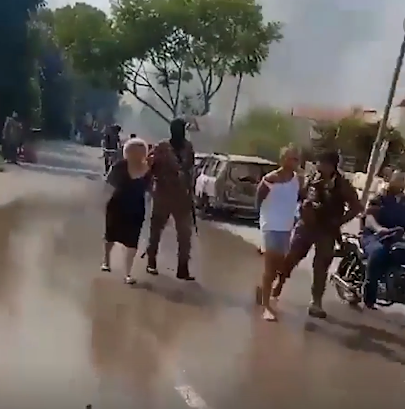
One case in which it is known that civilians were hit, a case that received wide coverage, took place in the house of Pessi Cohen at Kibbutz Be’eri. 14 hostages were held in the house as the IDF attacked it, with 13 of them killed. In the coming weeks, the IDF is expected to publish the results of its investigation of the incident, which will answer the question of whether Brig. Gen. Barak Hiram, the commander of Division 99 who was in charge of operations in Be’eri on October 7, was employing the Hannibal procedure. Did he order the tank to move ahead even at the cost of civilian casualties, as he stated in an interview he gave later to the New York Times?
Over all the months that have passed, the IDF has refused to say whether this procedure was employed against civilians who had been taken hostage. It now seems that even if the answer is positive, the question may have been only a partial one. The actions of Hiram may have simply been congruent with the way the IDF operated that day.
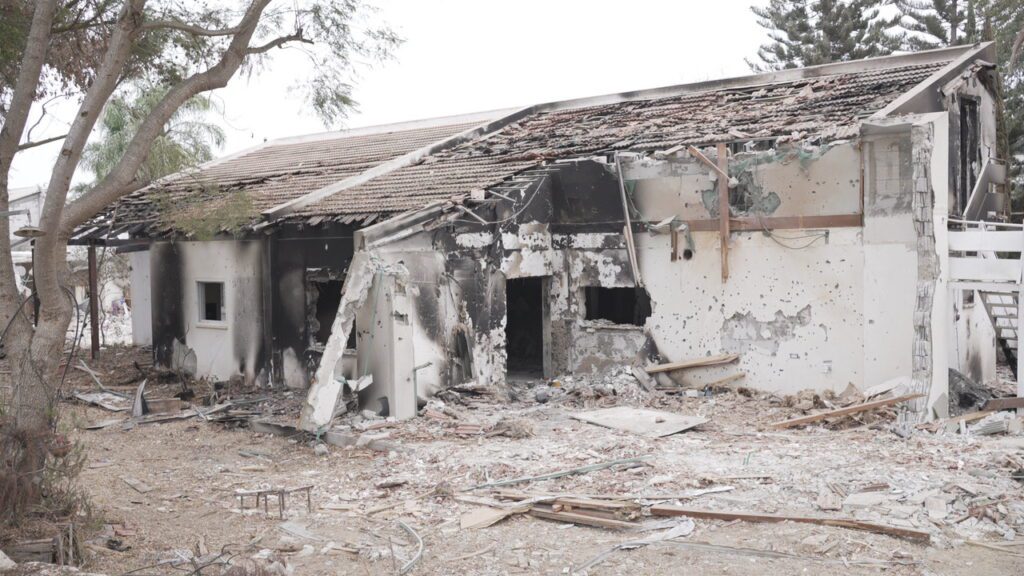
As far as Haaretz knows, even at 9:33 p.m. this was still the situation on the ground. At that time, there was a further order from Southern Command: close off all the border area with tanks. In fact, all forces in the area received permission to open fire at anyone approaching the border area, without any restrictions.
The IDF spokesman responded by saying that “the army has been fighting for six months at high intensity on several fronts, focused on attaining the war’s objectives. In tandem, the IDF has begun conducting internal investigations of what transpired on October 7 and the preceding period. The aim of these investigations is to learn and to draw lessons which could be used in continuing the battle. When these investigations are concluded, the results will be presented to the public with transparency.”
Yaniv Kubovich is a Military Correspondent for Haaretz based in Rishon LeZion, Israel. His work has been included in: Haaretz, MSN (US), The Internet Archive, Substack, Flipboard, Global Research, Forward, Jewish Journal (Los Angeles), Center for a New American Security (CNAS), CTXT, Reader Supported News, Mondialisation, SGT Report


No comments:
Post a Comment